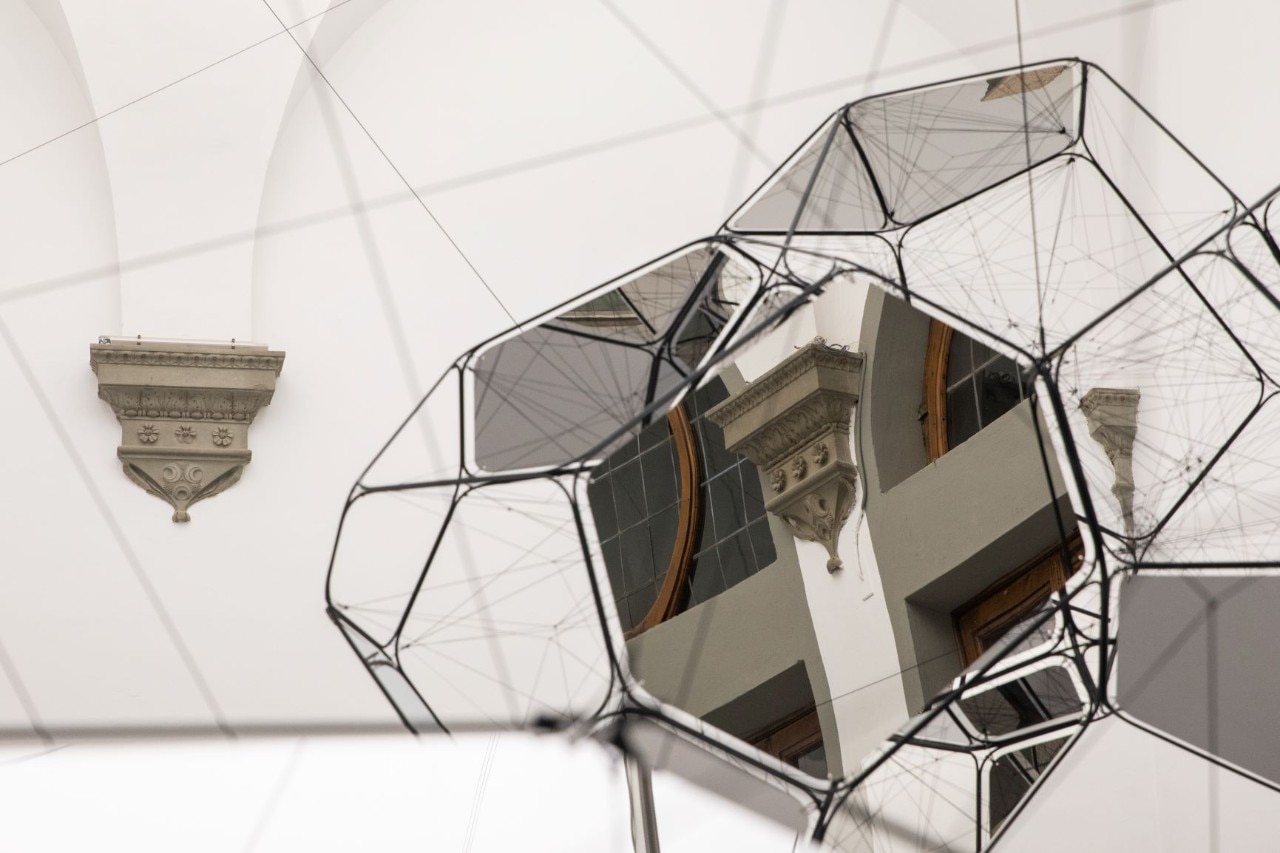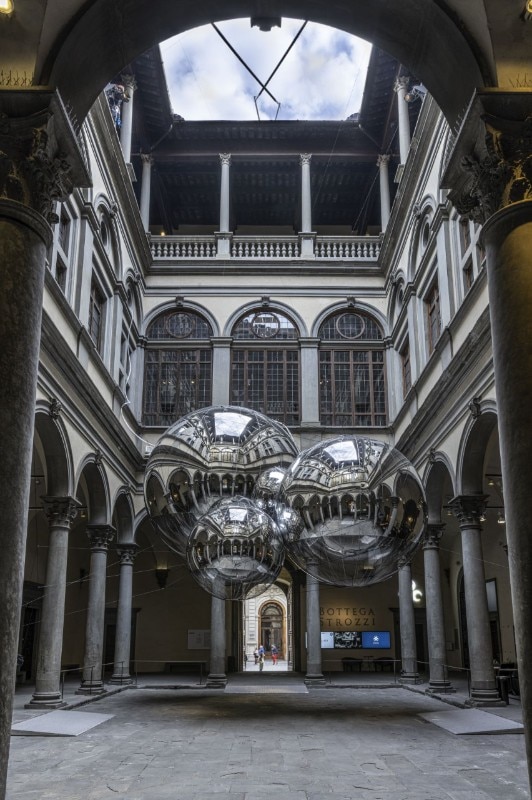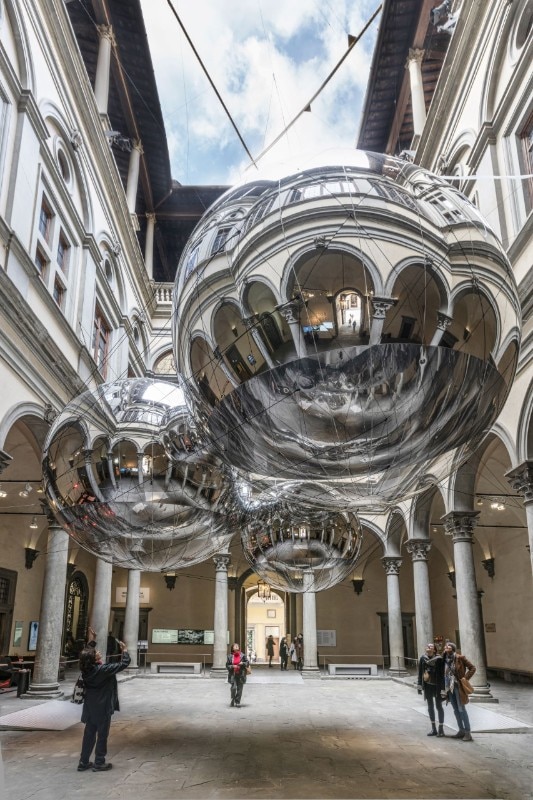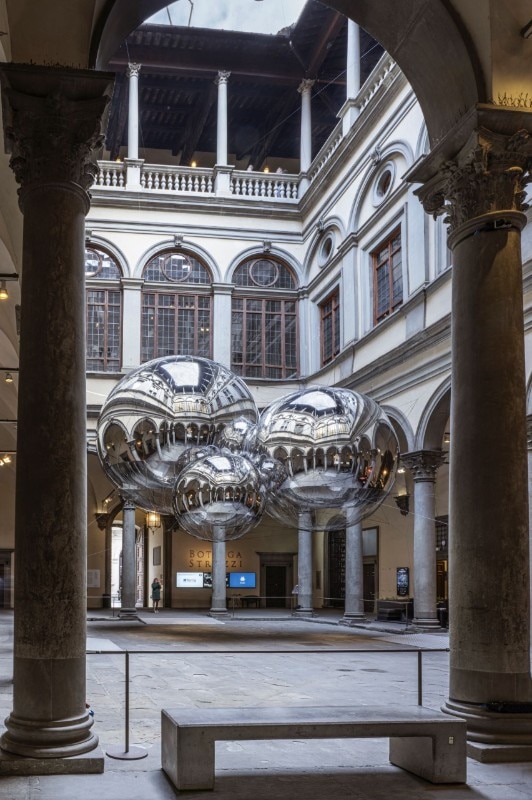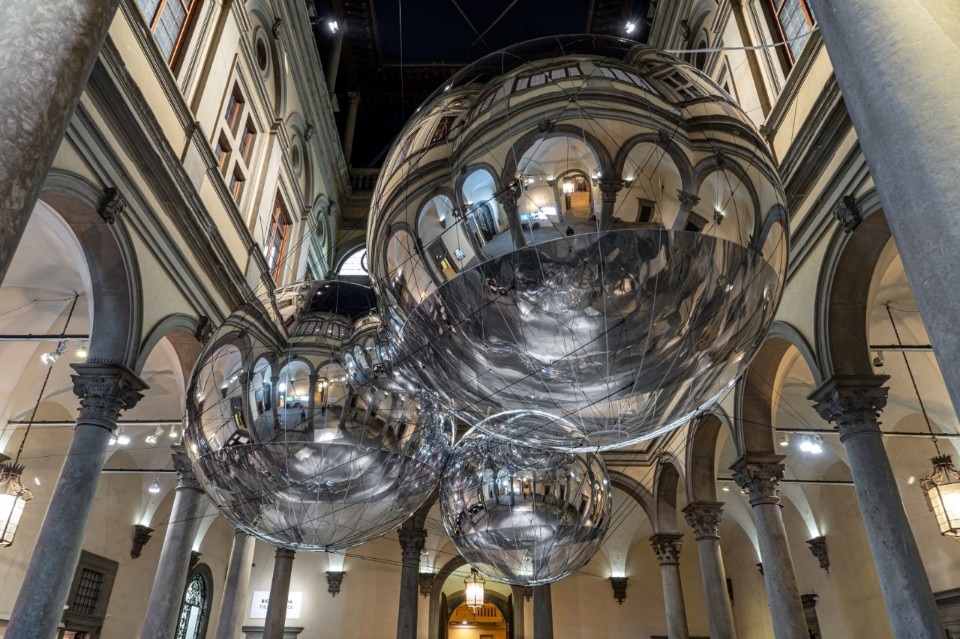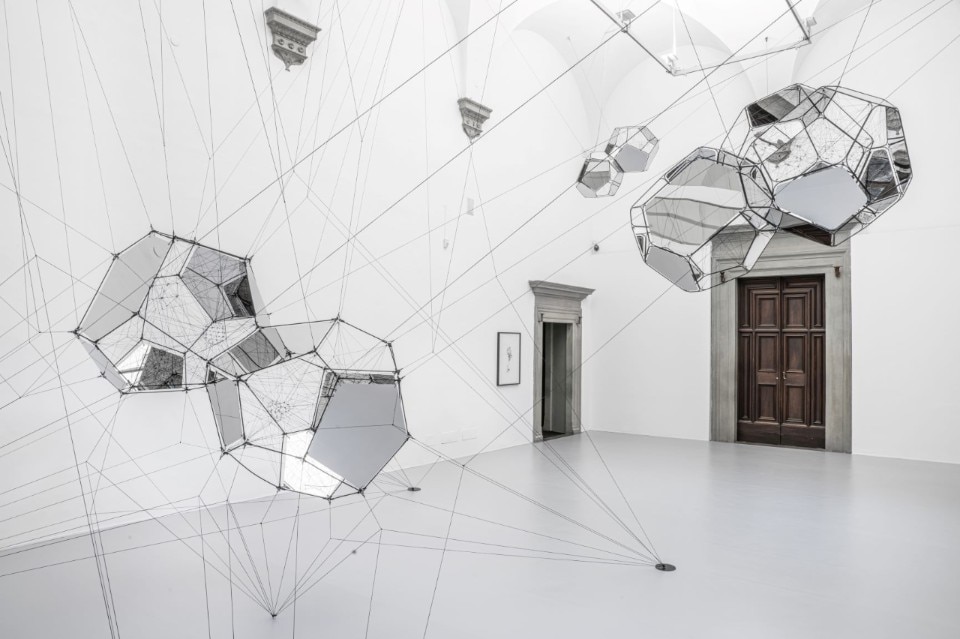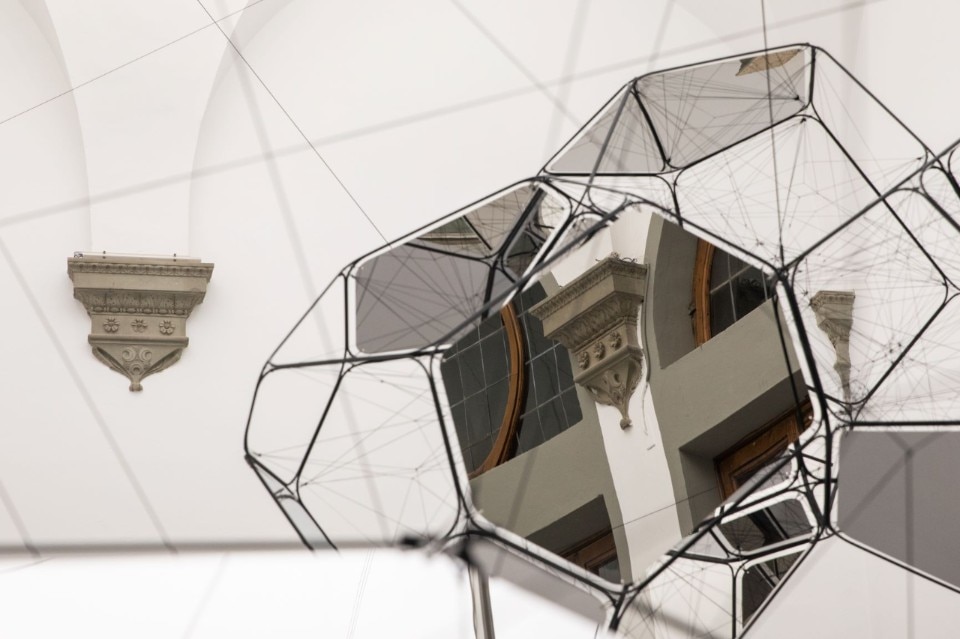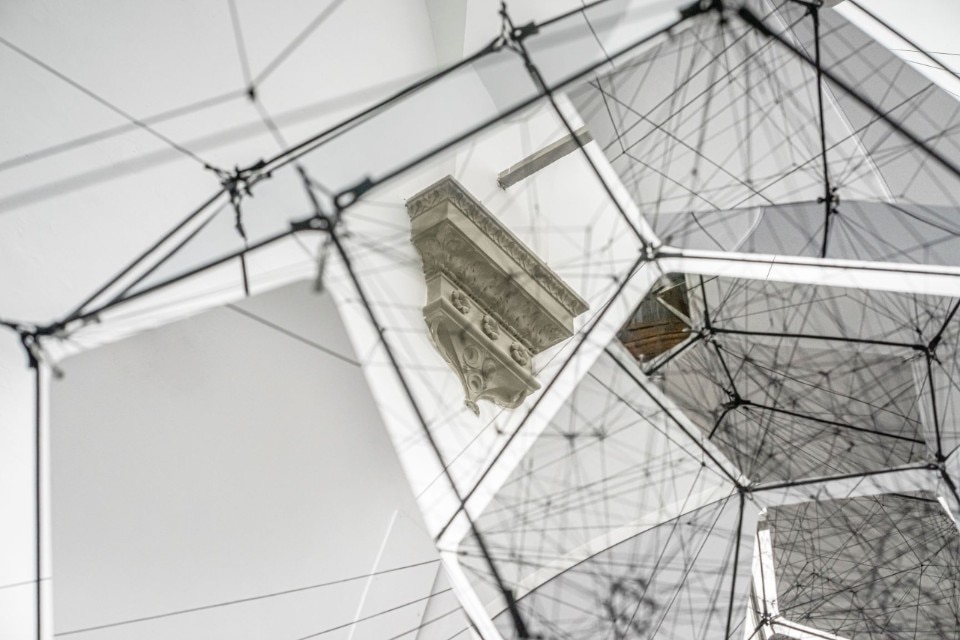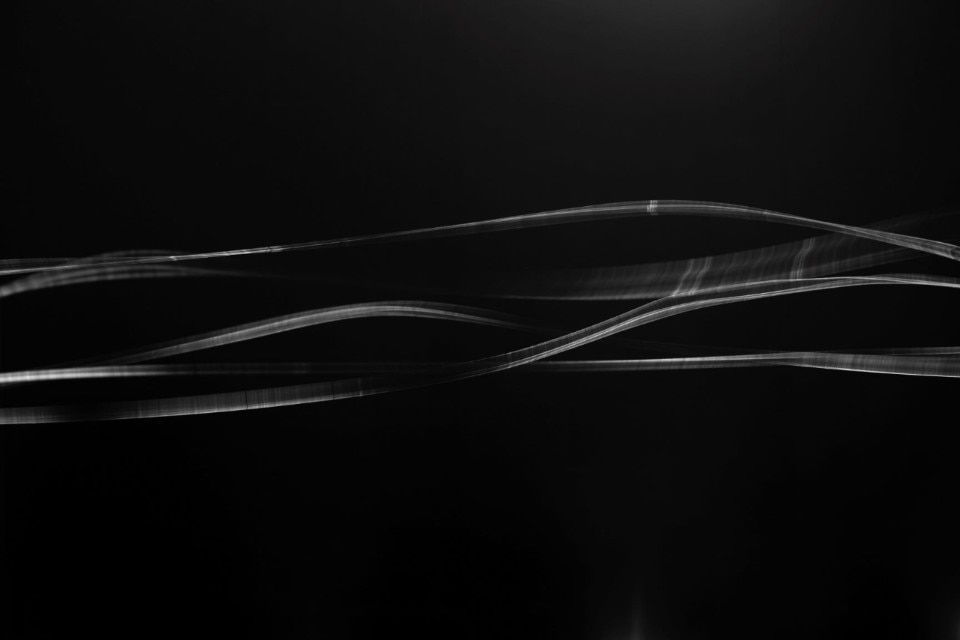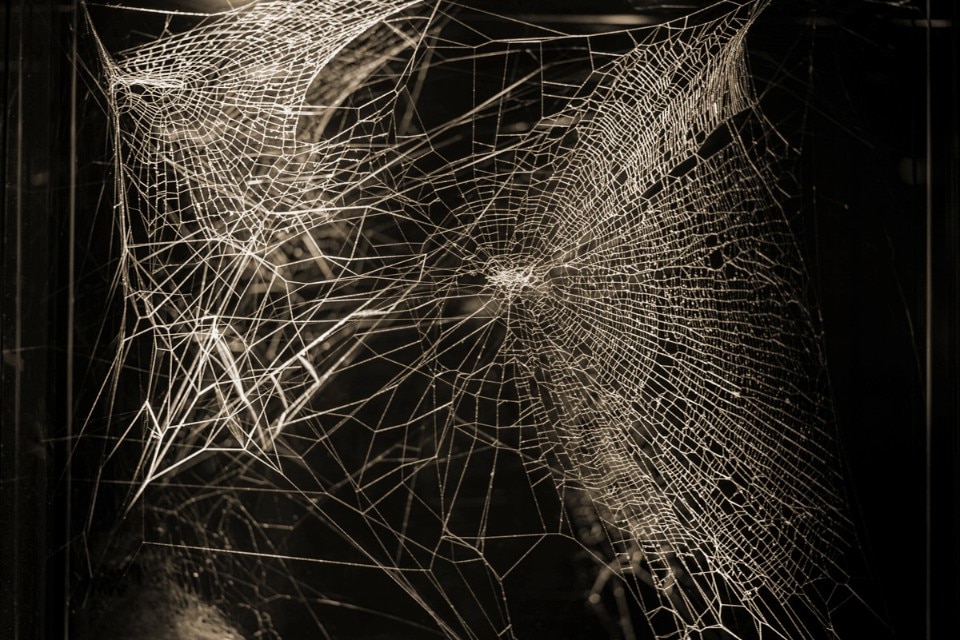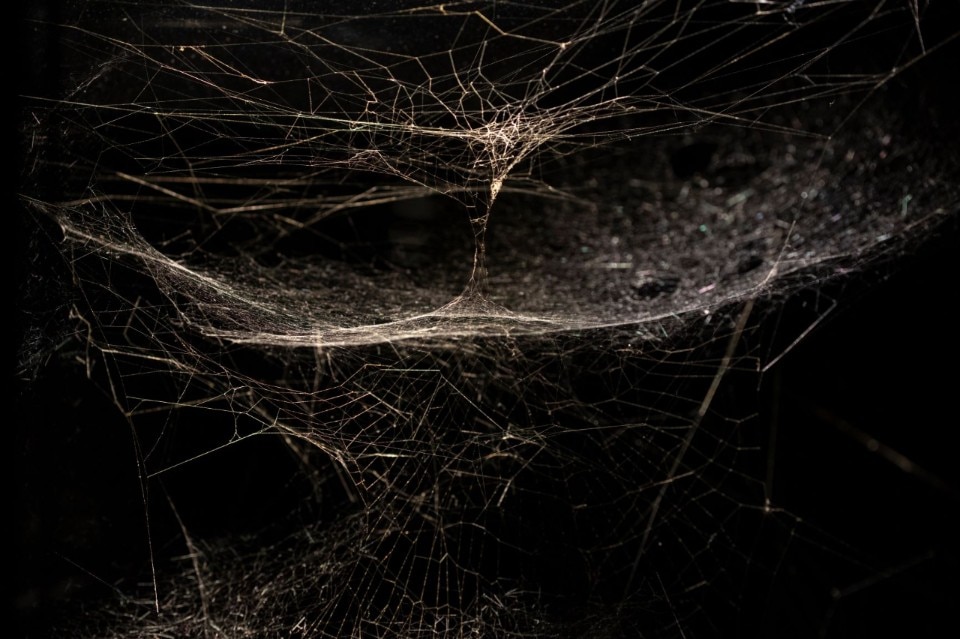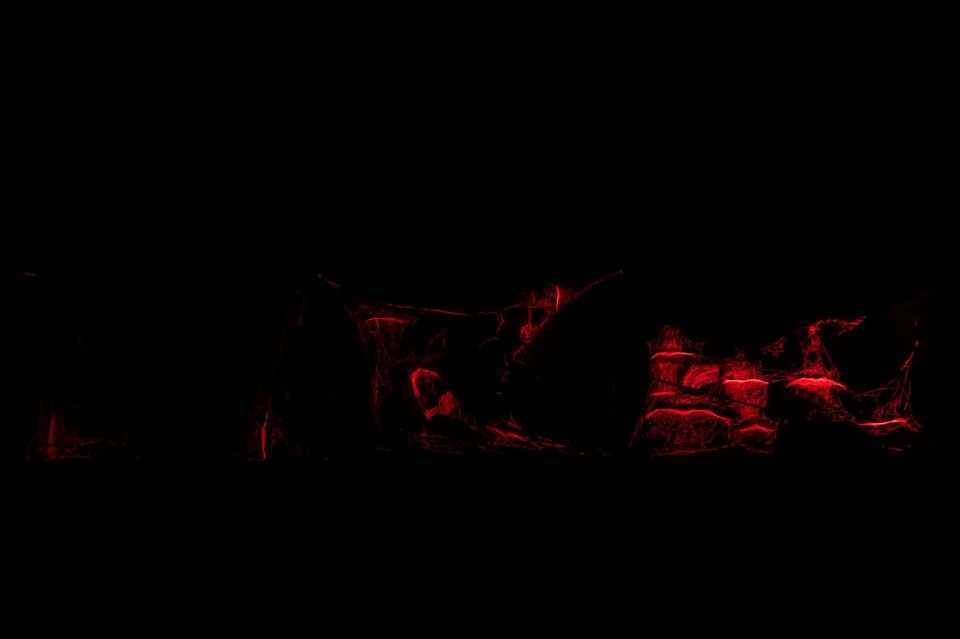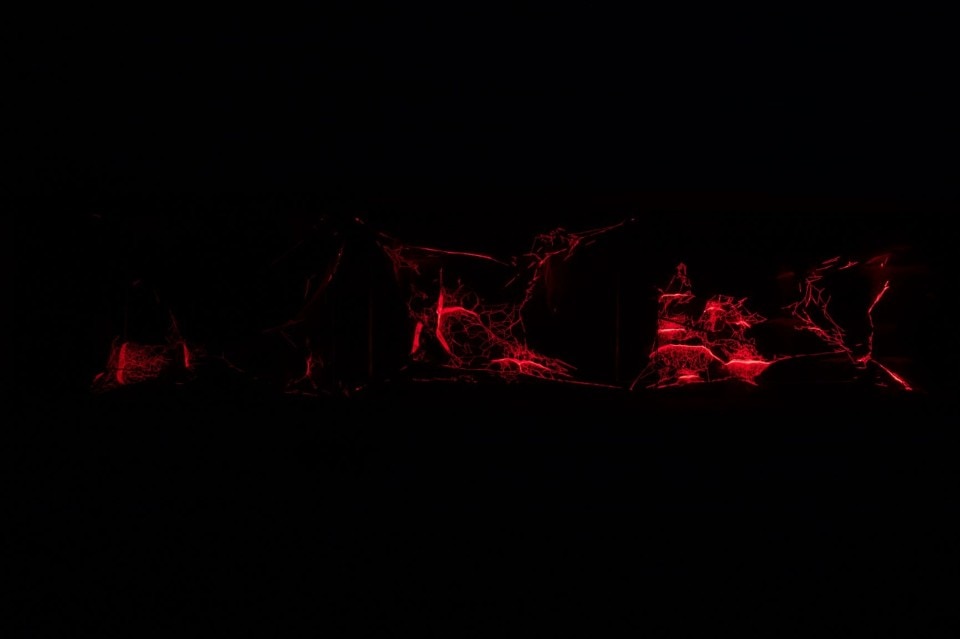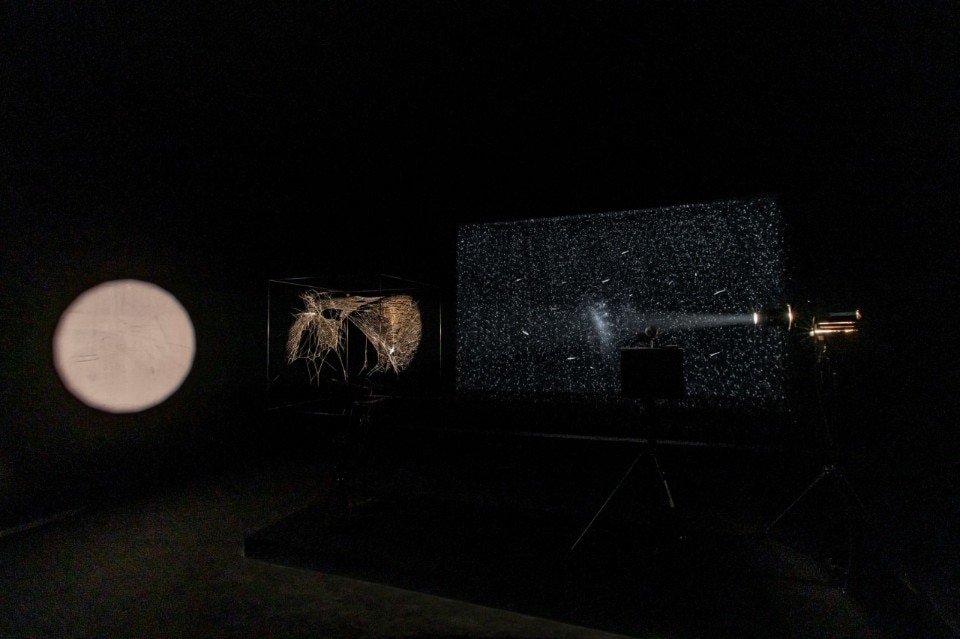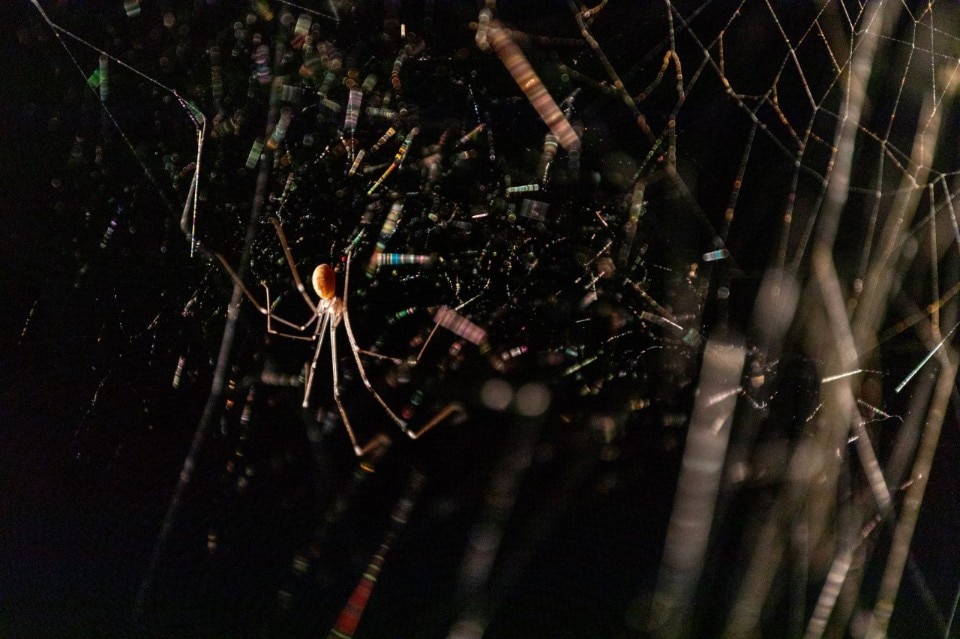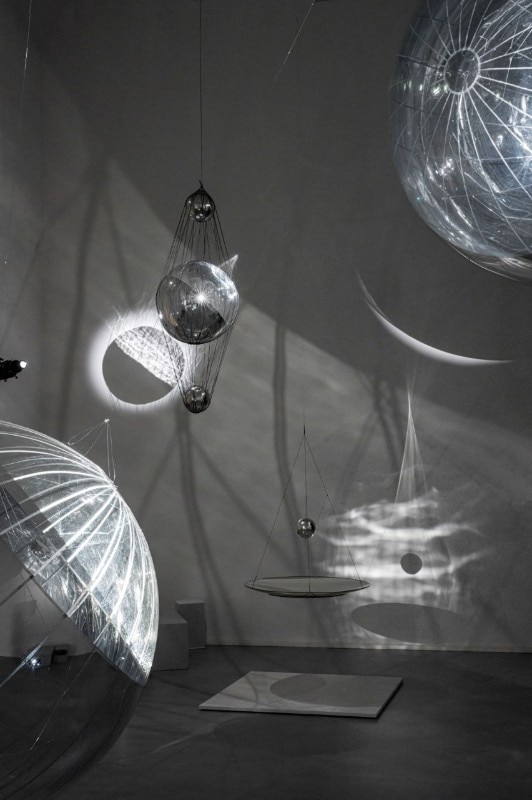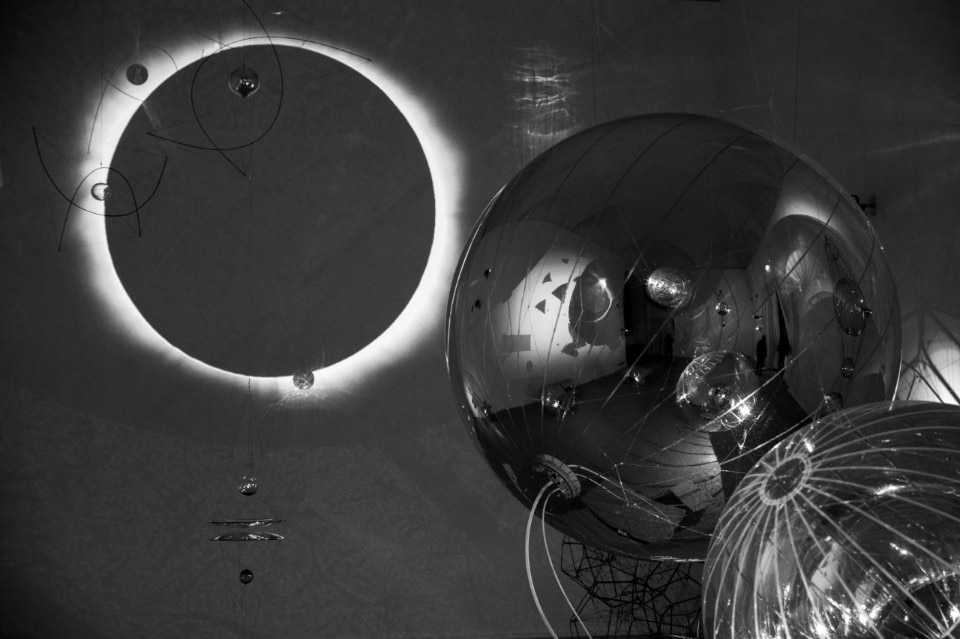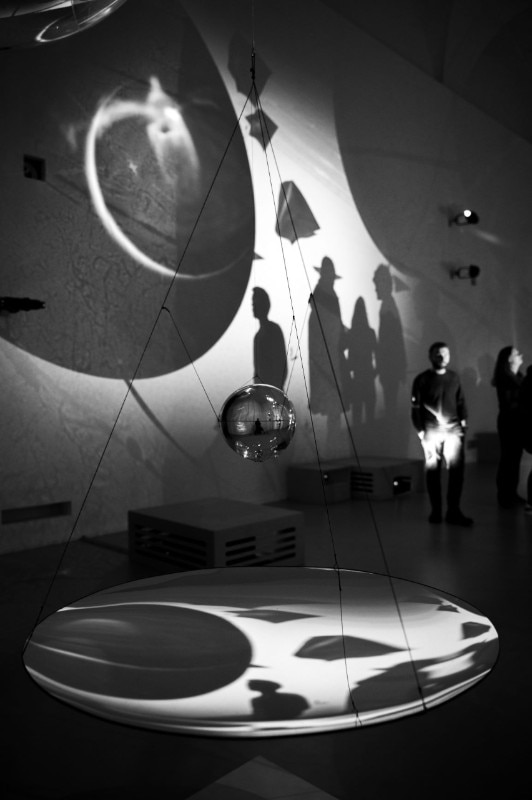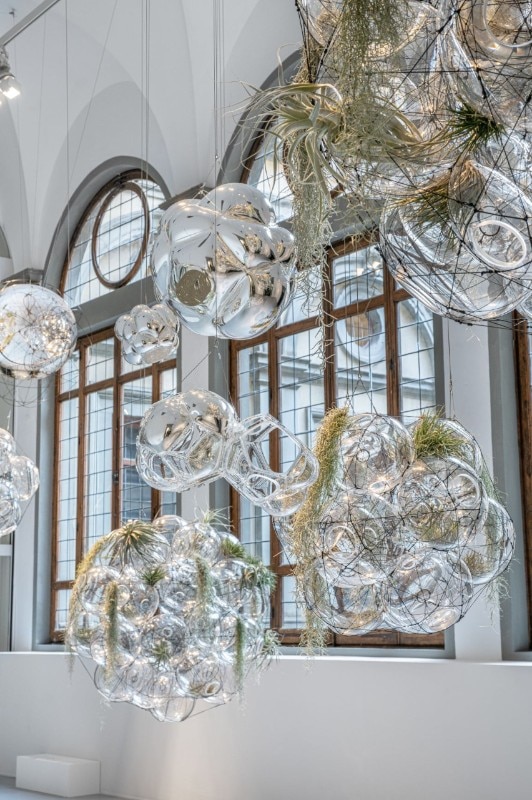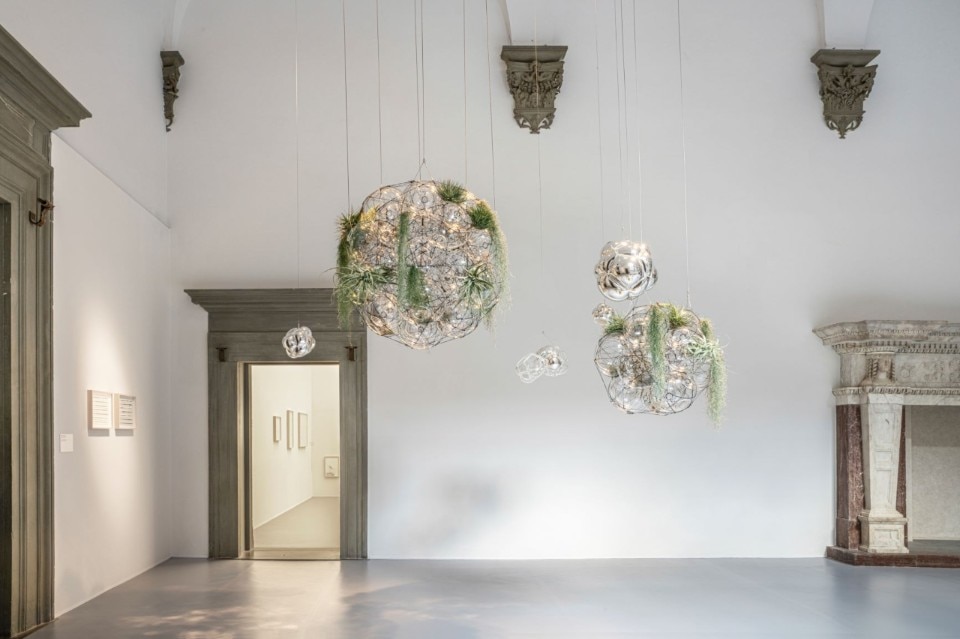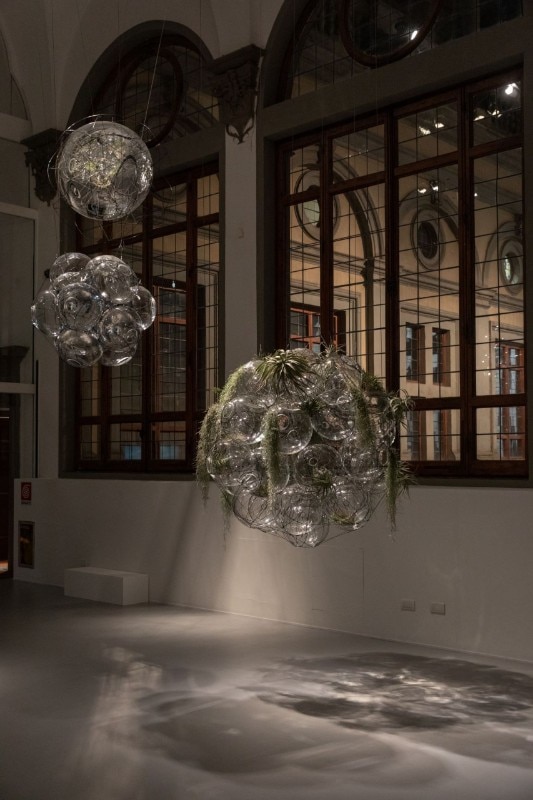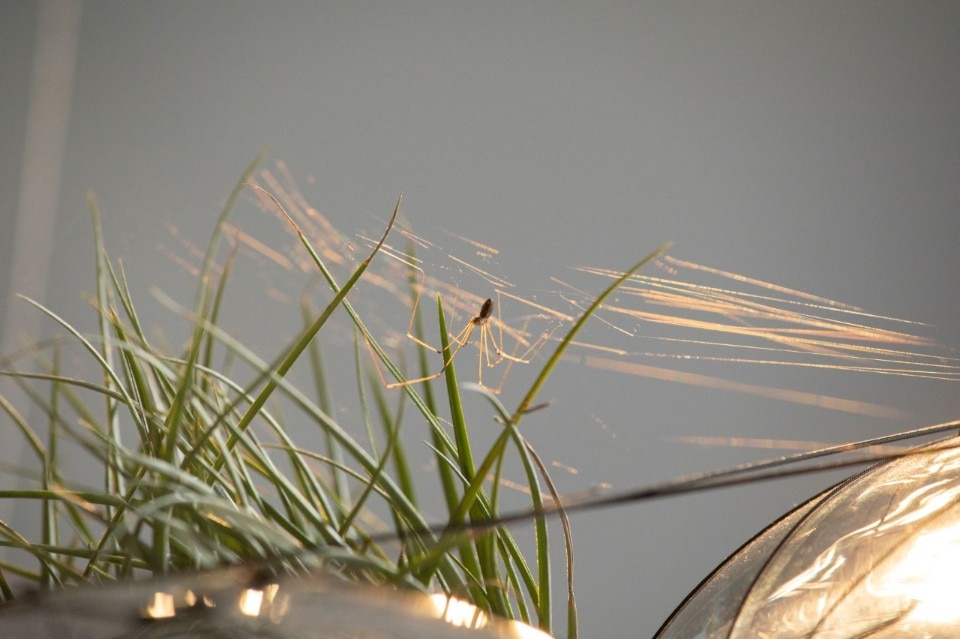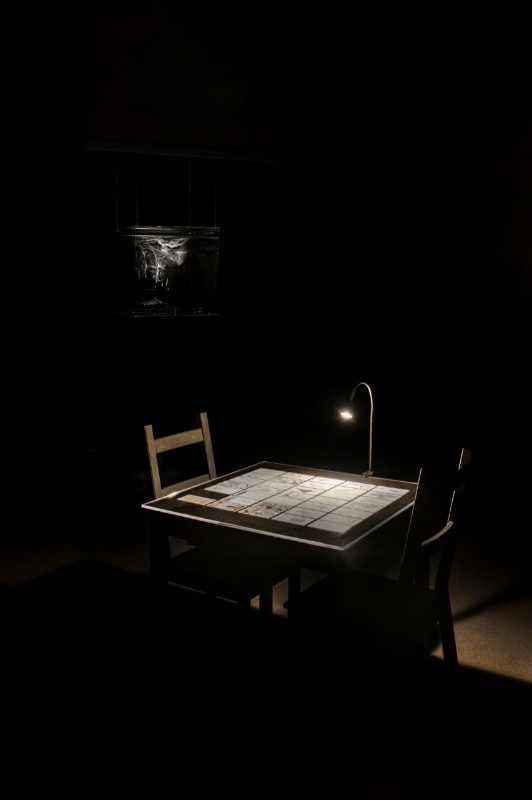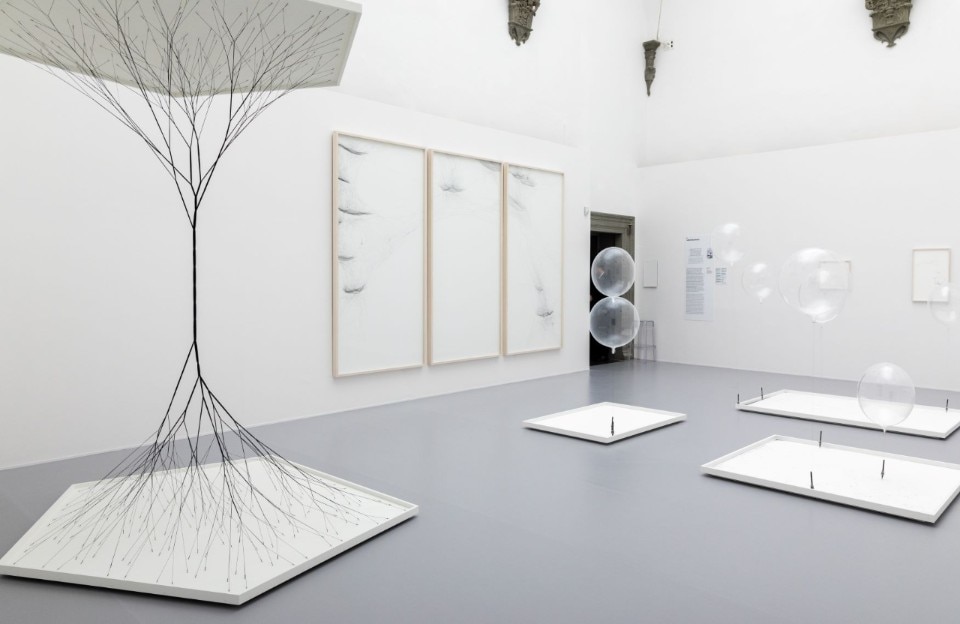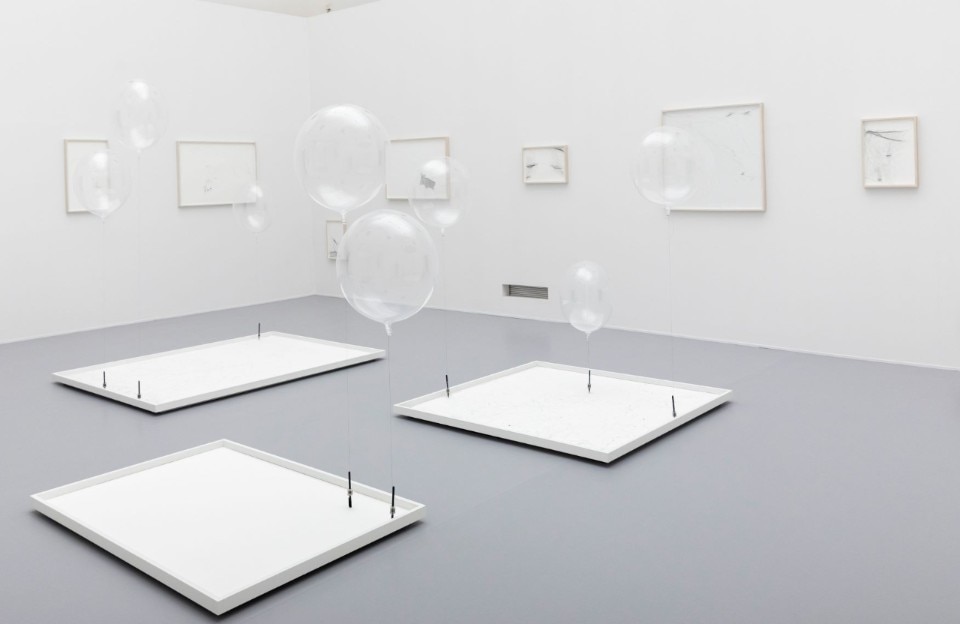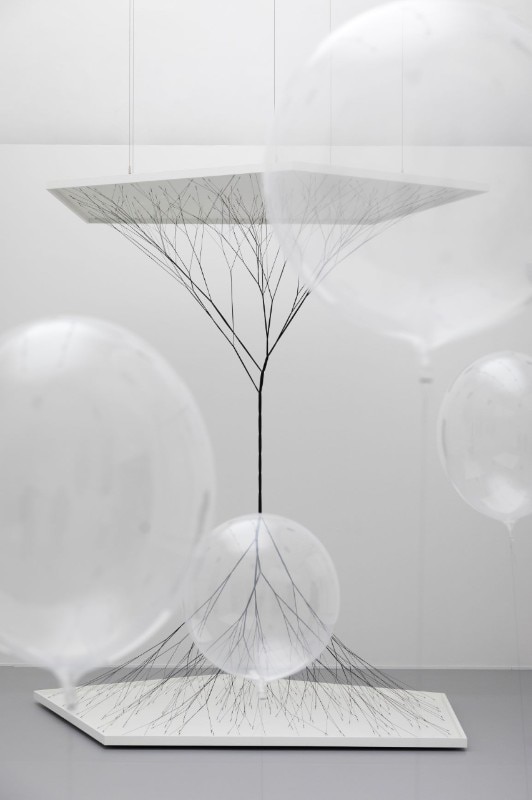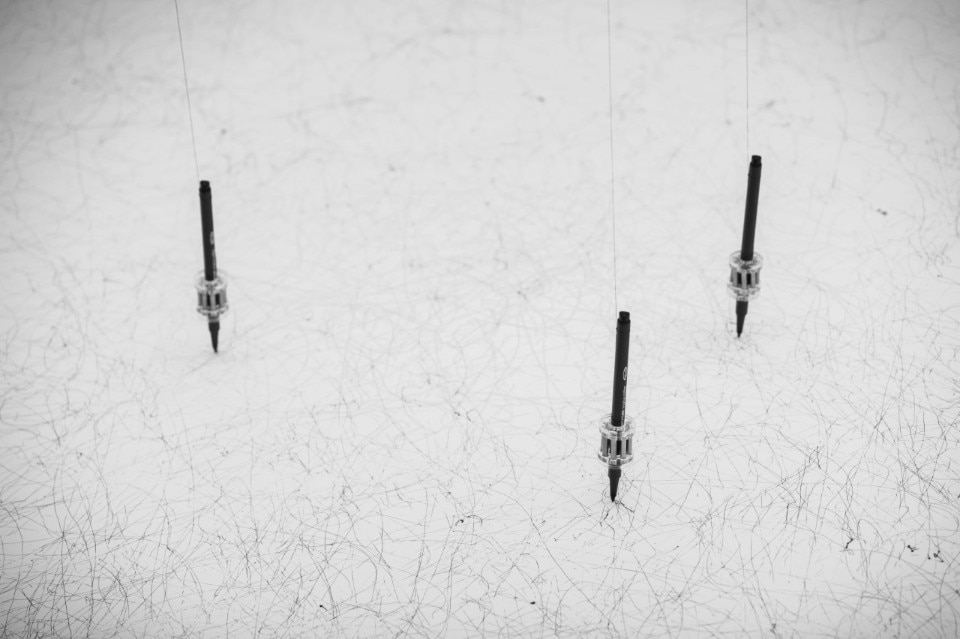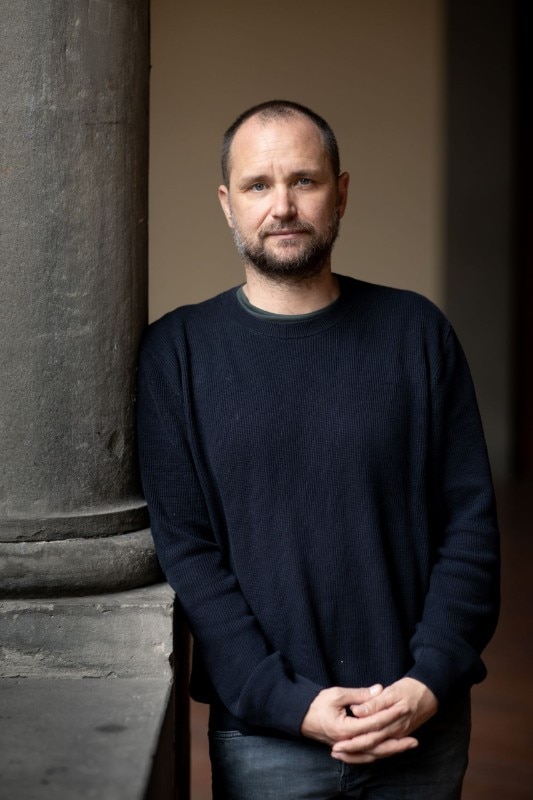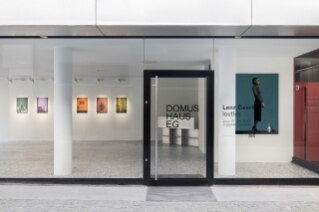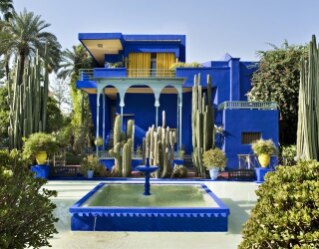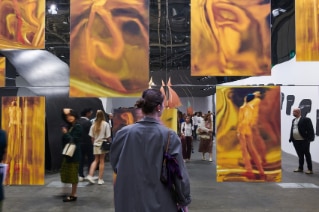A floating universe has invaded Palazzo Strozzi. It is the world of the Argentinian artist Tomás Saraceno – an architect by training, an enthusiast of science and its most futuristic results and a visionary of untiring exploration. In his work, virtually boundless and laden with implications that concern the present and the future, art joins with ecology and an attention to the cosmos and to nonhuman forms of life, such as spiders, in particular. Saraceno knows absolutely everything about these animals, prehistoric yet at the same time present in our day-to-day lives. This passion dates to his childhood, when he would observe the fine yet sturdy cobwebs taking shape on the windows in his attic; and, as he himself states, while he wondered if the spiders lived in his house or if he was living in theirs, he dreamed about being a builder of worlds. Today, those worlds are on view in one of the most prestigious museums.
The exhibition opens with an installation composed of gigantic silvery spheres connected to one another with ropes, as if they were hot-air balloons, suspended in the palace’s courtyard. The show continues inside with the first rooms, where white dominates and everything is airy and light. Here, from time to time, the spherical bodies become faceted, reflective, in some cases diaphanous and see-through; at other times, as with the Flying Gardens, they are inhabited by plants, the Tillandsia, that live off the air; or intertwine with rays of light that cast their shadows on the walls and thus give life to a cosmos in constant motion.
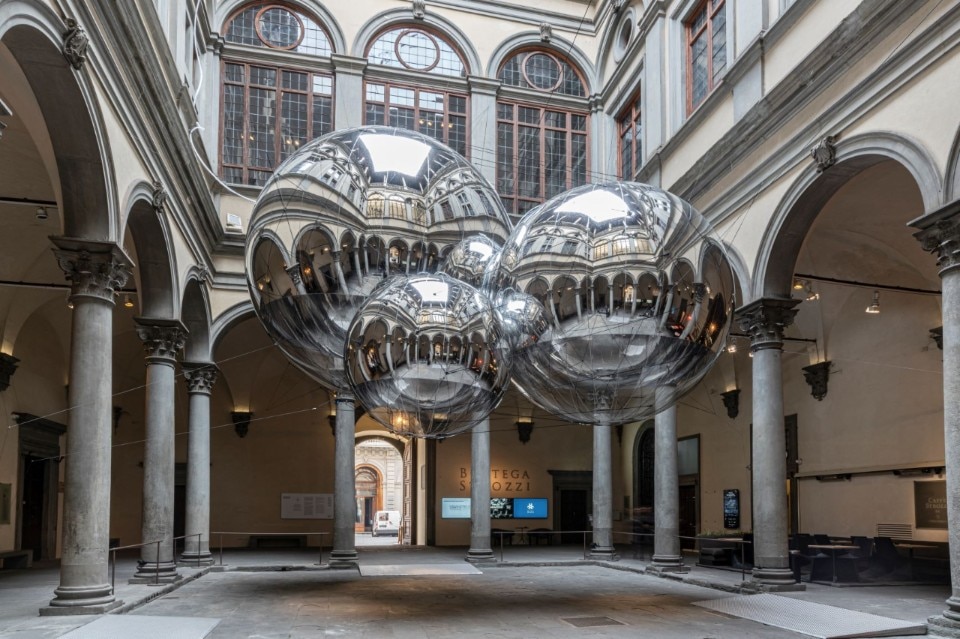
This light-drenched beginning is then followed, with drastic inversion, by a series of dark rooms. In the first, five long, very fine threads arranged horizontally emerge, languidly fluttering due to the air moved by visitors. A sonification translates in real time the vibrations of the curves. Other dark spaces follow. We are invited to immerse ourselves in the world of spiders and their architecture: the cobwebs, enhanced by the light that makes them shine, become the most precious and suggestive imaginable – true microcosms in which viewers can read the image of the universe. Instead, in the Aerografie in the next rooms, the artist evokes a suggestive parallel between airborne particles and cosmic dust.
The experience is immersive, synaesthetic, extremely engaging. The idea of a dialogue between physical and temporal dimensions, between a prehistoric past and a future waiting to be built is always present. In fact, for Saraceno, viewers can imagine another era, Aerocene, characterised by a sensitivity aimed at a new behavioural ecology.
Playing with the air, inventorying cobwebs, travelling through the air are some possible ways of accessing a new and different perception of the world. But there are others. For example, in a room, Saraceno displays the “Arachnomancy Cards” inspired by nggám, or divination through spiders, practiced by the Mambila tribes of Cameroon and Nigeria. According to this custom, questions are asked of a ground-dwelling spider that submits an answer by rearranging specific “divination cards”. For Saraceno, this vibrational world can offer us the knowledge we lack. In games, there is a kind of planetary harmonisation that is also a way to meet the challenges of the Anthropocene; that is, of a time when man experiences the world in a state of solipsism, running the risk of forgetting he is part of a whole: of a universe that includes multiple forms of life, bearers of sensibility that are different yet in constant exchange. In order to achieve this harmony, an open attitude is required, not only towards all types of research and understanding, but towards each living being.
The universe created by Saraceno allows visitors to enjoy some of the most evocative visions without giving up the critical reflections humanity urgently needs, and it is based on an open and interconnected view that erases separation and hierarchies and is aimed at the nonvisible and the nonhuman, thus allowing spectators to perceive the correlations between the infinitely small and the infinitely large, between a very remote past, the present and the achievable.
- Title:
- Aria
- Artist:
- Tomás Saraceno
- Where:
- Fondazione Palazzo Strozzi, Florence
- Where:
- From 22nd of February to 19th of July 2020
- Address:
- Piazza degli Strozzi, 50123, Firenze FI


